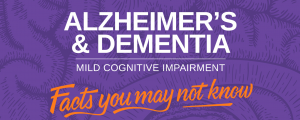16 Facts and Figures to Better Understand Alzheimer’s
Alzheimer’s is a complex disease and since research is always growing and expanding, it’s important to understand fact from fiction. These facts and figures will not only highlight key facts, but will also increase awareness regarding this degenerative condition.
16 Facts and Figures to Help You Better Understand Alzheimer’s
Sometimes, it takes a concrete value to really open our eyes. We all know that Alzheimer’s is affecting millions, but would you believe that worldwide, nearly 44 million people have Alzheimer’s or related dementia? What’s even more shocking, is that one 1-in-4 individuals with Alzheimer’s have been diagnosed.
In order to truly understand this disease, you need to know the hard facts. Of course, as research continues to evolve, new facts emerge. Staying within the loop regarding the most up-to-date research is important, as we are all in this together. With so many people directly affected, millions more are indirectly affected. To increase your level of awareness, here’s what you need to know.
- Alzheimer’s was identified more than 100 years ago
With its fairly recent history, Alzheimer’s is still a mystery in many ways. Although identified more than 100 years ago, 70 years passed before it was connected to dementia — being the most common cause, as well as a leading cause of death. This means that Alzheimer’s research is still in its early stages.
On a positive note, researchers have uncovered many clues that have shed light on this degenerative condition. With that being said, there is still plenty to discover, especially in terms of the biological changes that cause this disease to develop in the first place. Of course, the end goal is to figure out how to prevent or even slow down this progressive disease.
- There is no cure
Sadly, at this time, there is no cure for Alzheimer’s. In fact, among the top ten causes of death in the United States, Alzheimer’s is the only disease that cannot be prevented, cured or even slowed. This is what makes this disease so overwhelming, as there’s little we can do to interfere.
At this point in time, researchers believe that early detection will be key when aiming to prevent or slow down progression. In the past ten years alone, there has been a tremendous amount of growth surrounding early detection research. Who knows what we’ll achieve in the next five to ten years.
- Changes may occur long before symptoms arise
When the human brain is healthy, it contains around 100 billion neurons and 100 trillion synapses. The connections made throughout the brain allow signals to travel, allowing for complex thoughts, memories, emotions, sensations, skills, and movement. As amyloid plaques begin to accumulate, damage occurs, resulting in symptoms of Alzheimer’s.
It is believed that brain changes may begin 20 years or more before the first noticeable symptoms surface. Researchers believe that when damage and the initial changes occur, the brain continues to compensate, allowing for normal function. Once damage is significant, signs of cognitive decline begin to show.
- Only a small percentage of cases are due to genetic mutation
It is estimated that 1 percent or less of all cases, develop due to a mutation involving any of three specific genes. Mutations involve the gene for the precursor of amyloid protein (APP), as well as the genes for the presenilin 1 and presenilin 2 proteins. Those who inherit the genes for APP and presenilin 1 genes will definitely develop this disease.
In comparison, when inheriting a mutation in the presenilin 2 gene, you have a 95 percent chance of developing Alzheimer’s. More often than not, those who carry this mutation will develop this disease before the age of 65 — sometimes as early as 30 years old. Family history is something that should be discussed with your physician.
- The heart and brain are closely linked
Growing evidence now suggests that the health of your brain is influenced by overall heart health. Due to the rich network of blood vessels in the brain, this organ requires a steady supply of oxygen and nutrient-rich blood. Meaning, a healthy heart will ensure optimal functioning. Also, many risk factors of cardiovascular disease are associated with Alzheimer’s and dementia, such as obesity and smoking.
- Currently, 5.4 Million Americans live with Alzheimer’s
In 2016, an estimated 5.4 million Americans of all ages have Alzheimer’s disease. Of those, approximately 5.2 million people are over the age of 65, while 200,000 are under 65 years of age. This equates to one out of every nine people above the age of 65 having Alzheimer’s and about one-third of all people over the age of 85.
- Alzheimer’s is more common among women
Almost two-thirds of Americans with Alzheimer’s are women. Of the 5.2 million Americans with Alzheimer’s over the age of 65, 3.3 million are women, in comparison to 1.9 million men. Researchers believe that this may be due to the fact that women live longer than men on average — as older age is the greatest risk factor. Based on new research, biological factors or life experience may also play a role.
- Rates are expected to rise
In 2010, there were an estimated 454,000 new cases of Alzheimer’s. Based on current projections, by 2030, this figure is expected to reach 615,000 — a 35 percent increase. By the year 250, this number will increase once again by 110 percent, reaching 959,00 new cases on an annual basis.
- Alzheimer’s is a deadly condition
Although patients can continue to live for many years after an initial diagnosis, Alzheimer’s will typically take the individual’s life. Regardless of the cause of death, among individuals who are 70 years old, 61 percent of those with Alzheimer’s will pass away before they’re 80, in comparison to just 30 percent of people without Alzheimer’s.
- The public health impact of deaths is increasing
Unfortunately, although deaths from other causes are declining, deaths from Alzheimer’s are steadily increasing. Between the years 2000 and 2013, deaths attributed to this disease increased by a shocking 71 percent — in comparison to heart disease, which decreased by 14 percent. This is due to both an increase in deaths attributed to Alzheimer’s, as well as changes in patterns regarding death certificates.
- Everyone is unique
Although it’s clear that more and more individuals are affected by Alzheimer’s, everyone is unique. On average, people age 65 years and older tend to survive 4 to 8 years when living with this disease. With that being said, some individuals will live as long as 20 years. This is based on a number of factors, including the rate of progression.
- The majority of patients end up in a home
Since individuals will typically live 40 percent of their total years with this disease living in the most severe stages, many end up in a nursing home. In comparison to just 4 percent of the general population, 75 percent of people with Alzheimer’s above the age of 80 will be placed in a nursing home. Sadly, two-thirds of dementia patients will die in these homes, in comparison to 20 percent of people with cancer.
- Millions are providing unpaid support
Of the help provided to older adults in the United States, 83 percent comes from unpaid caregivers. In 2015, within the United States, 15.9 million family members and friends provided 18.1 billion hours of unpaid care to those suffering from Alzheimer’s or other dementias. Of these caregivers, 34 percent are aged 65 or older, and approximately two-thirds are women.
- Nearly a quarter are ‘sandwich generation’ caregivers
Of those caring for an individual with Alzheimer’s, 23 percent are ‘sandwich generation’ caregivers, meaning they not only care for an aging parent, but also for a child under the age of 18. As you can imagine, this leads to a tremendous amount of stress — both physical and mental. Caregiver burnout is a significant issue that is currently sweeping the globe.
- Caregiver emotional well-being is a concern
Although many caregivers have positive feelings about caring for a loved one, high stress levels are challenging to avoid. It has been reported that 59 percent of family caregivers who care for someone with Alzheimer’s, rate their emotional stress levels as high or very high. In turn, approximately 40 percent of family caregivers of people with Alzheimer’s and dementia suffer from depression.
- Alzheimer’s is one of the most expensive chronic diseases
In 2016, total payments for all individuals with Alzheimer’s was estimated at $236 billion. Of those costs, Medicare and Medicaid are expected to cover 68 percent. In terms of total payments, 19 percent, or $46 billion is expected to come from out-of-pocket spending.
Better understanding this disease means learning the history and evolution of current research. Although the future may look grim in terms of the current facts and figures, researchers continue to uncover new potential hints and clues each and every day. We have come a long way in the past decade and with this type of momentum, anything is possible.
References:
https://www.alz.org/documents_custom/2016-facts-and-figures.pdf

